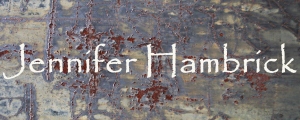
Go create haiga – artworks that join visual image with haiku – inspired by trees.
That was the essentially challenge the wonderful journal Haigaonline issued last fall to all practitioners of the ancient genre of haiga. And is there anyone who wouldn’t want to spend time gazing at, photographing, and writing about trees?
No, there is not.
I am most grateful to Haigaonline editor Linda Papanicolaou for showcasing four of my tree-inspired haiga in a featured portfolio of my work in the journal’s most recent issue, Vol. 19, No. 1, published spring 2018.
Here is Papanicolaou’s commentary about my haiga in this featured portfolio, and below are the haiga themselves:
Each of the tree haiga in the present portfolio approaches the interaction of text and image differently. In the first, the image of a maple tree in fall colors mirrors line 3 of the poem. In the second, there’s a wider shift as the deep red, not yet fallen leaves of the image serve as visual metaphor for the text. In the third, the image of the tree is a structural support for a concrete poem, bot linked by the revelation of line 3. The text of the fourth is dependent on the image and may not work as a stand-alone poem, but it has the bite that I’ve come to know as characteristic of Jennifer’s senryu haiga. It’s a commentary on the disposability of trees in our consumerist culture.
About eight years ago our beautiful ash tree, pictured in the haiga above (“you would never have guessed”), was diagnosed with the emerald ash borer. I wept for a week as we considered our options, but destroying and removing the tree was simply not one of them. So, we signed up for tree health care, contracting with a tree service to give the ash biennial treatments of a substance that drives away the borer. The tree is still with us and is still glorious, though its thin canopy and brittle branches remain telltale signs of its illness.
I took this photo standing under the ash tree and looking up into the canopy, which was thinning as much from autumn leaf droppage as from the borer. The haiku our fragile tree inspired comments on the ephemerality of all life and our common human delusion that all there is to any life – tree, human, or otherwise – is what meets the eye.

One day last fall, the sun was pouring through the yellow leaves of our maple tree that, from the second story of our home, I felt absolutely wrapped in a warm, golden glow. The image in this haiga relates something of that glow, and whatever emotional warmth the camera could not capture, the haiku, hopefully, helps to convey.

My friend the violinist Siwoo Kim took this photograph while traveling in South Korea and posted an unedited version of it on Facebook. When I saw the picture, the contrast between the vibrancy of the red leaves and the autumnal feel of the setting sun took my breath away. Siwoo gave me his blessing to turn his photo into a haiga, so I edited the image, bringing out more of the drama of the lighting and adding a border and the text of my poem, which the image inspired.

On the day after Christmas 2017, a sadly large number of pine trees were lying at curbs all around our neighborhood. They had been put out just in time for the recycling collectors.
Congratulations to my fellow haiga artists whose work also appears in this issue of Haigonline.
